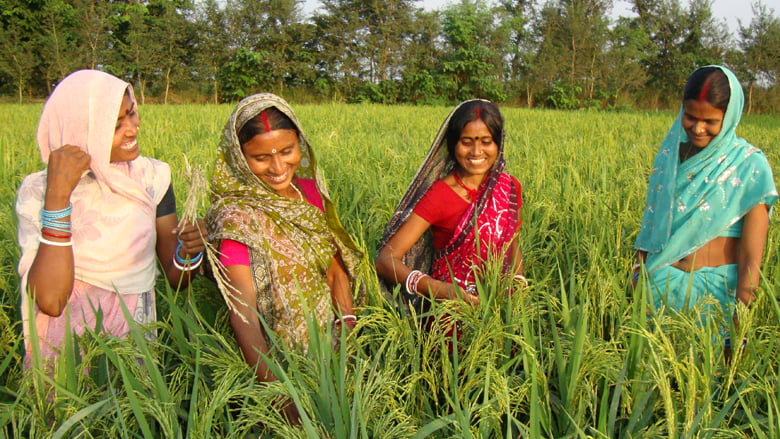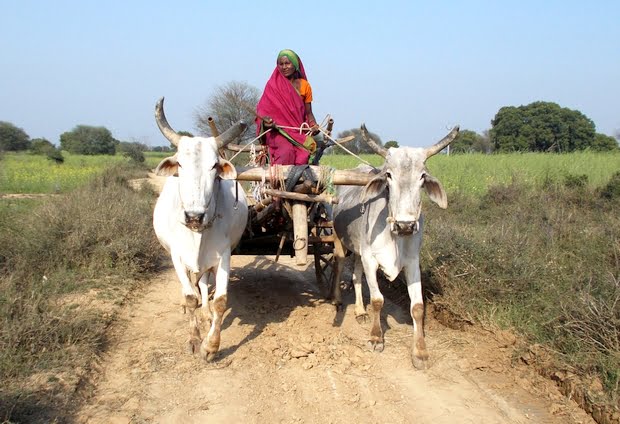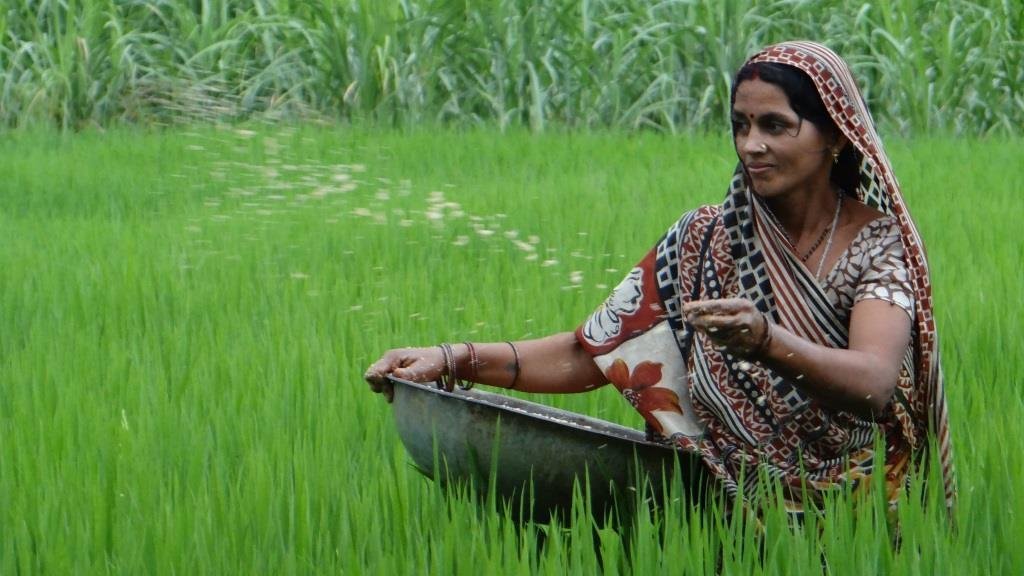In Bihar, agriculture with its allied sectors, is the key to the overall development of the state economy along with the largest source of livelihood. According to the Agriculture Ministry of Bihar, it is the backbone of Bihar’s economy as 77% of workforce are involved in agriculture and are generating nearly 24.84% of the State Domestic Product. Talking in broader context in India, Food and Agriculture Organisation or FAO says that 70% of rural households are still depended primarily on agriculture for their livelihood, with 82% of farmers being small and marginal. Also Indian agriculture sector contributes 18% to GDP or Gross Domestic Product and provides employment to 50% of the country’s workforce.
Now the question arises on the workforce behind these activities. Google “Farmer”, and you get to see the images of mostly male farmers. Show-cased as male-dominated profession, women have often been excluded from the farming narratives. Farmers, in general, are referred as “Kisan Bhai” in speeches by any politician, media houses or any other organisation.

According to National Commission for Women, Bihar’s agricultural industry employs 85% of female but they are not officially treated as farmers, and are either labelled as “agricultural labourers” or “cultivators”. From preparing the land, selecting seeds, transplanting the seedlings, applying manure/fertilisers/pesticides and then harvesting, winnowing and threshing, women work harder and longer than male farmers but are never recognised.
Show-cased as male-dominated profession, women have been often excluded from the farming narratives. Farmers, in general, are referred as “Kisan Bhai”, in speeches by any politicians or media houses or any other organisation.
M.S. Swaminathan, the famous agricultural scientist says, “some historians believe that it was women who first domesticated crop plants and thereby initiated the art and science of farming. While men went out hunting in search of food, women started gathering seeds from the native flora and began cultivating those of interest from the point of view of food, feed, fodder, fibre and fuel“.
According to a study by Women Earth Alliance, 85% of rural women in India are farmers (including seasonal and part-time work in the fields), while only 5% of land is owned by them. Without ownership over land, women have very little access to credit and are often barred from government schemes that are meant for their support. Land rights of women in India are mediated by various personal laws.
The Hindu Personal Law allows women the right to own the ancestral land but some customary practices and traditions do not allow to follow it in some states. On contrary, Muslim Personal Law does not allow for women’s share in agricultural land, except in few states. Therefore, more than 90% of the agricultural land continues to be transferred only through male inheritance, whereby women face discrimination. For women, land is not just a productive asset but also equally a source of security, status and recognition which they are often denied of.
Female farmers in Bihar do not go through only these discriminations but also face various problems while working at farms. These problems are physical, chemical, occupational, seasonal, biological and others. Most of the farm activities done by women require constant bending which leave them with severe pain in legs, neck, hands and back. These health issues sometimes lead to frequent miscarriages, infant deaths and premature births. Due to lack of awareness among the female farmers, exposure to wrong use of pesticide and other agrochemical products lead to occupational risk which result in poisoning and death. Exposure to bad weather, close contact with dangerous plants or animals, long and lengthy working hours are also hazardous.

One of the major problems faced by female farmers is that they are not exposed to gender friendly farm machines. Many of the farm equipment required for work, such as transplanting, cleaning, milling, harvesting, etc. are not designed for women which increases the risk of injuries. They have been tested only on men. Besides farm work, female farmers also need to maintain household and take care of their children after they return from work. Also, women being the main driving force behind the agricultural economy have no right in decision-making as well as the same access to resources as men do.
According to a study by Women Earth Alliance, 85% of rural women in India are farmers (including seasonal and part-time work in the fields), while only 5% of land is owned by them. Without ownership over land, women have very little access to credit and are often barred from government schemes that are meant for their support.
According to a report by the UN, “If given proper rights and land share, women can control additional income and spend more of it than men do on food, health, clothing and education for their, thus helping in tackling poverty.” Women are considered as the “weaker gender” when compared to men and hence, they are paid lesser, despite working for the same time and under same circumstances.
Also read: We Talked To Rukmini Rao About The National Convention Of Women Farmers
Some historical movements led by women have won them certain rights at workplaces, mostly in the secondary and the tertiary sectors by securing their job rights by building safe work environment. But, when it comes to farming and allied activities, female farmers have not got their rights fulfilled. Another reason for this wage difference is migration of male farmers to cities in search of good paid jobs which forces women to fill this vacuum.
Farmers’ suicide is talked about on a large scale in Media but the major crisis is that it forgets to mention women. Farmers suicide rose by 42% between 2014 and 2015, according to NCRB data. What is more significant here is that, out of total 8007 farmers suicide in 2014, 441 were female farmers. Among the suicides by agricultural labourers, the National Crime Records Bureau or NCRB recorded 577 women.

It is very necessary to examine the reasons behind not recognising female farmers in Bihar. Why do all the issues related to farming revolve around male farmers only? Why are only male farmers given space in media, and not female farmers despite their contributions?
It is important to understand that despite the involvement of female farmers from buying seeds to harvesting crop in the process of farming, they still remain unrecognised. We need to figure out the discriminatory provisions in law, and make women equal partners in land inheritance and ownership and ensure effective implementation through sensitising land officials.
Also read: When Will Our ‘Achche Din’ Arrive, Ask Aggrieved Farmers At #KisanMuktiMarch
15th October is celebrated as National Women Farmer’s Day or Rashtriya Mahila Kisan Diwas in India, but is it of any significance if women have been unable to achieve economic equality in gender which has also been guaranteed by the Indian Constitution, under the aegis of Article 14? We need to get some solutions to the invisibilisation of female farmers’ issues in the Indian media. Their contribution should be acknowledged right from recognising them as farmers to changing the concept of farming itself as masculine and male-dominated, which results in the ignorance of female farmers despite of their huge contribution.
Featured Image Source: Sputnik International
About the author(s)
Dr. Surbhi Kumari is a social entrepreneur, researcher, and co-founder of SumArth, working at the intersection of agriculture, gender, and menstrual health. With over a decade of experience in empowering rural and marginalized communities in Bihar, she has pioneered innovations like climate-smart Mushroom Huts and community-run sanitary pad units, reaching thousands of women and farmers.




